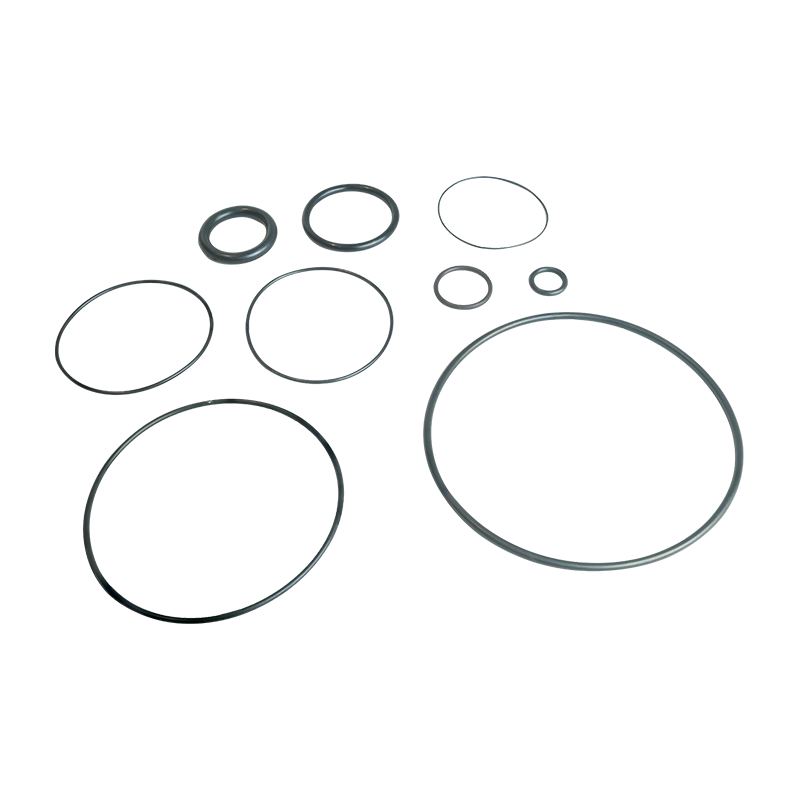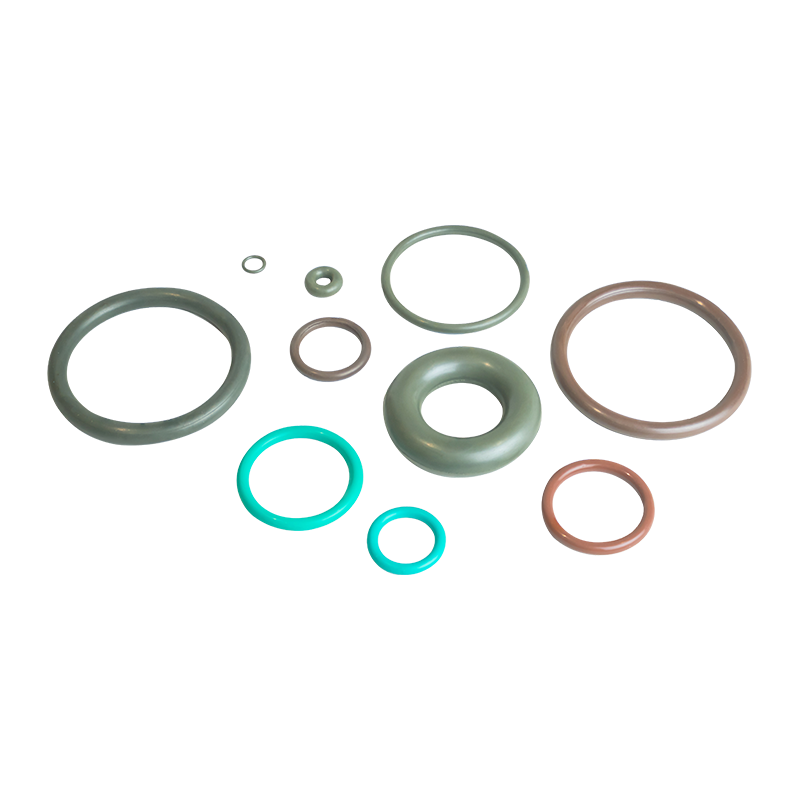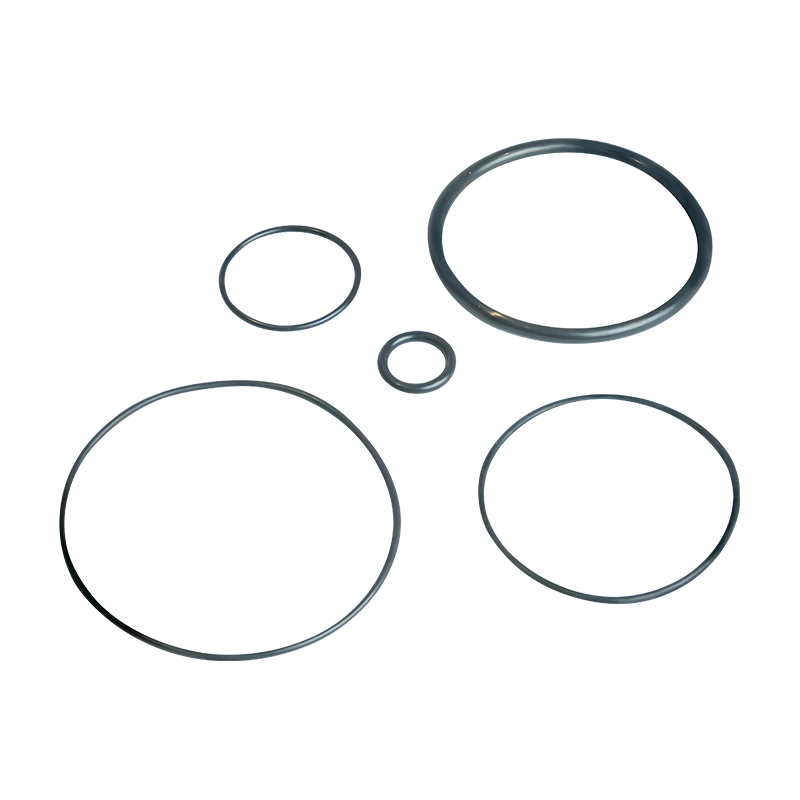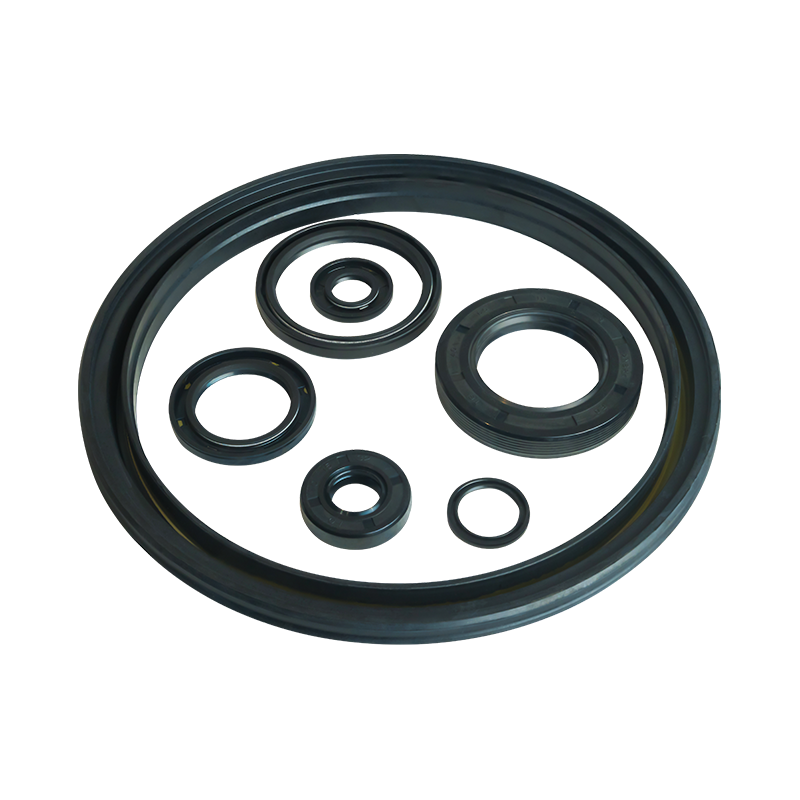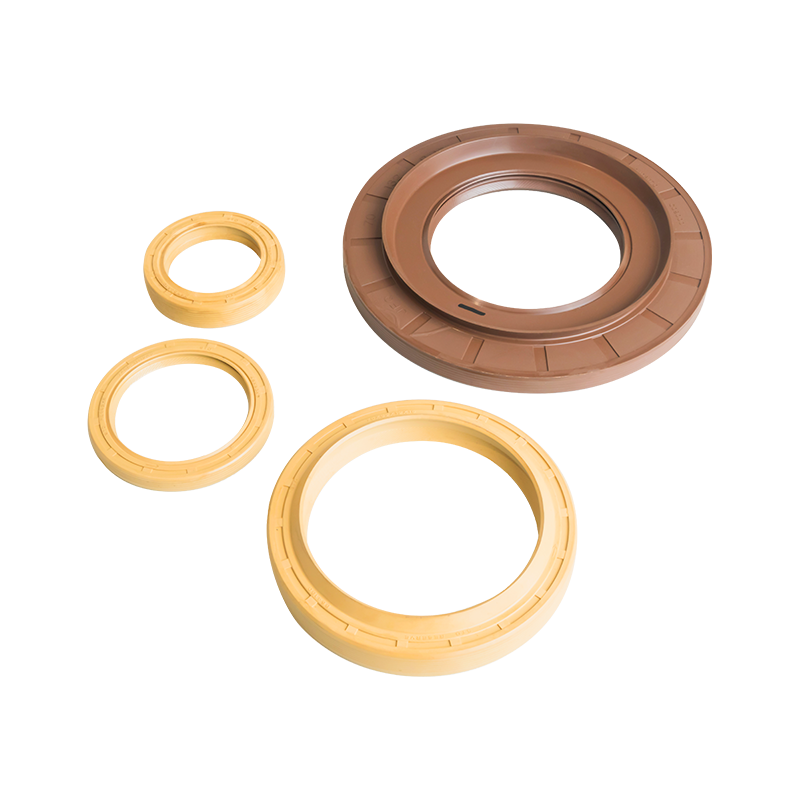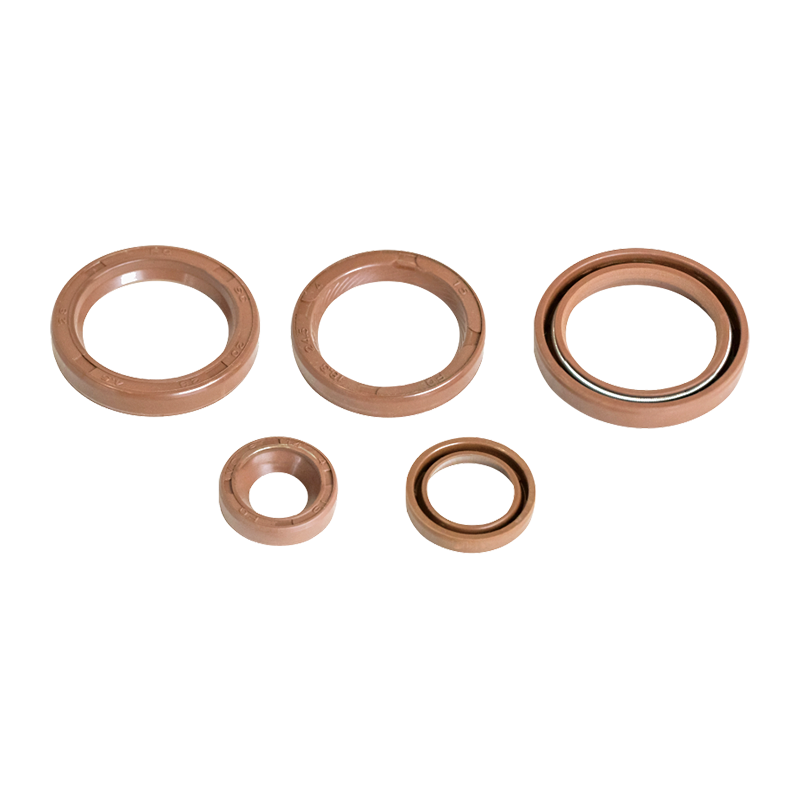The Lifecycle of a Mechanical Seal: Where Does the O-ring Kit Fit In?
In the intricate world of industrial machinery, the reliable operation of pumps, mixers, and compressors is non-negotiable. At the heart of this reliability lies the mechanical seal, a precision component designed to contain fluids and exclude contaminants. However, a mechanical seal is not a monolithic entity; it is a system of components working in concert. While the primary sealing faces rightfully receive significant attention, their performance is fundamentally dependent on a set of secondary seals, most notably the o-rings.
Introduction to the Mechanical Seal System
A mechanical seal functions by creating a running seal between two highly flat, lapped faces—one rotating with the shaft and the other stationary within the housing. This primary seal is the main barrier against fluid leakage. However, these faces require precise alignment and flexibility to accommodate minor shaft movements, vibrations, and thermal expansion. This is where the secondary seals come into play. They are responsible for creating static seals at various points, such as between the rotary face and the shaft, the stationary face and the housing, and in other ancillary locations.
The nbr mechanical seal rubber o-ring kit is a curated collection of these vital secondary sealing components, specifically designed for use during the maintenance or repair of a mechanical seal. The kit typically contains o-rings of various sizes, and sometimes other gaskets or elastomeric parts, all made from Nitrile Butadiene Rubber (NBR). This material is chosen for its excellent balance of properties, including good resistance to oils, fuels, and water, which are common in many industrial applications. The purpose of this kit is to ensure that during any servicing of the seal, all the critical elastomeric components are replaced with new, compatible parts, thereby restoring the seal system to its original integrity. Without a fresh nbr mechanical seal rubber o-ring kit, the entire sealing assembly is compromised from the moment of installation, as worn or degraded o-rings cannot perform their essential functions.
The Beginning: Specification and Selection
The lifecycle of a mechanical seal begins long before it is installed in a pump. The specification phase is a critical determinant of its future performance and longevity. During this stage, engineers must consider a wide array of operational parameters to select a seal and its accompanying components that are fit for purpose.
The Criticality of the O-ring in Seal Design
In seal design, the o-ring is not an afterthought; it is an integral part of the sealing system. Its primary functions are multifaceted. First, it provides a static seal, preventing leakage along the paths between the seal components and the equipment itself. Second, it can act as a vibration damper, absorbing minor oscillations from the shaft that could otherwise damage the fragile primary sealing faces. Third, in many seal designs, certain o-rings allow for a degree of axial movement, which is crucial for maintaining face contact under conditions of thermal expansion and contraction or shaft float. When a seal is specified, the material of its o-rings is chosen with the same rigor as the material of the sealing faces. For a vast range of general-purpose applications involving mineral-based lubricants, water, and hydraulic fluids, an nbr mechanical seal rubber o-ring kit is the standard and economically sensible choice. Its specification hinges on its proven performance within a typical temperature range and its cost-effectiveness for industrial sealing.
Matching the nbr mechanical seal rubber o-ring kit to the Application
Selecting the correct elastomer is a process of matching material properties to the operating environment. The following table outlines key considerations for specifying an NBR o-ring.
| Application Parameter | Consideration for NBR O-rings |
|---|---|
| Fluid Media | Excellent compatibility with petroleum-based oils, greases, fuels, and water. Poor compatibility with ozone, ketones, esters, and brake fluids. |
| Temperature Range | A standard operating range of approximately -30°C to 100°C (-22°F to 212°F). Special formulations can extend this range. |
| Pressure | Functions effectively in most standard industrial pump and mixer pressure regimes. |
| Cost & Availability | Highly cost-effective and widely available, making it a go-to choice for a multitude of applications. |
Failure to correctly specify the o-ring material at this stage can lead to premature failure. For instance, using a standard nbr mechanical seal rubber o-ring kit in an application involving steam or aggressive chemicals would lead to rapid degradation of the elastomer, causing the entire seal to fail. Therefore, the selection of the o-ring kit is a foundational step that sets the stage for the entire lifecycle of the mechanical seal.
The Installation Phase: A Moment of Truth
The installation of a mechanical seal is a precise procedure where attention to detail is paramount. It is during this phase that the components from the nbr mechanical seal rubber o-ring kit are first put into service. The quality of the installation directly influences the seal’s performance, mean time between failures (MTBF), and overall reliability.
Preparation and Handling of the O-ring Kit
Before installation begins, the new nbr mechanical seal rubber o-ring kit should be inspected. Each o-ring should be checked for any visual defects such as nicks, cuts, or irregularities in its cross-section. The work area must be meticulously clean, as even microscopic particles trapped under an o-ring can create a leak path or score the primary sealing faces. It is also crucial to verify that the kit is correct for the seal model and size. Using o-rings from an incorrect or generic kit can lead to improper compression, which is a primary cause of early failure. The handling of the o-rings is also important; they should not be stretched or twisted during installation, as this can permanently deform the material and create a weak point.
The Critical Role of Lubrication and Proper Seating
One of the most critical steps during installation is the lubrication of the o-rings. A dry o-ring is prone to rolling, twisting, or tearing as it is slid over shafts or pressed into glands. A proper lubricant reduces friction, allows the o-ring to slide smoothly into its correct position, and ensures it is not damaged during the process. The lubricant must be compatible with both the NBR material and the process fluid. Once lubricated, the o-ring must be carefully seated in its gland. The gland is the cavity that houses the o-ring and is designed to provide a specific amount of compression, known as the squeeze. This compression is what creates the initial sealing force. An under-compressed o-ring will not seal effectively, while an over-compressed one can experience excessive stress, leading to rapid extrusion and loss of sealing lip integrity. Proper installation of the nbr mechanical seal rubber o-ring kit components ensures that the mechanical seal assembly is correctly aligned and that the primary faces are free to float and maintain contact without constraint.
Operational Life: The Unseen Workhorse
Once the mechanical seal is successfully installed and the equipment is operational, the primary sealing faces are the main actors. However, the o-rings from the nbr mechanical seal rubber o-ring kit continue to perform vital, albeit unseen, functions throughout the seal’s service life. Their performance during this phase is a direct result of the correctness of the specification and the quality of the installation.
Dynamic Support and Environmental Resistance
While the o-rings are classified as static seals, the environment in which they operate is dynamic. They are constantly subjected to system pressure, temperature fluctuations, and mechanical vibrations. The nbr mechanical seal rubber o-ring kit provides components that must maintain their elasticity and sealing force under these conditions. The NBR material’s resistance to the pumped fluid is constantly tested. In a correctly specified application, the o-rings will swell slightly, which can actually improve the seal, but will not degrade, harden, or soften excessively. This resistance to compression set is a key property, meaning the o-ring can recover its original shape after being under compressive load for extended periods, maintaining a consistent sealing force. Furthermore, the o-rings contribute to damping vibrations from the rotating equipment, protecting the precise lapped faces of the primary seal from chatter or misalignment.
The Consequences of O-ring Degradation in Service
If an o-ring begins to fail during operation, the effects will inevitably manifest at the primary seal. The failure modes are often progressive. For example, if an o-ring hardens and loses its elasticity due to excessive heat or chemical attack, it can no longer maintain the necessary axial movement, leading to uneven face wear or an open seal face condition, resulting in leakage. If it softens and swells, it can create excessive friction, hindering the free movement of the seal components and potentially causing hang-up, which also leads to leakage and rapid face wear. In many cases, what appears to be a primary seal failure is, in fact, a secondary seal failure. The nbr mechanical seal rubber o-ring kit is, therefore, a frontline defense. Its integrity ensures that the primary faces can perform their intended function without being compromised by failures in the supporting components. Regular monitoring of equipment for signs of leakage can provide an early indication of o-ring distress before it leads to a catastrophic seal failure.
Failure Analysis and The Role of the O-ring Kit
When a mechanical seal fails, a thorough root cause analysis is essential to prevent a recurrence. A significant percentage of seal failures can be attributed, directly or indirectly, to issues with the secondary seals. Disassembling the seal and carefully inspecting the components from the nbr mechanical seal rubber o-ring kit can provide invaluable diagnostic clues.
Common O-ring Failure Modes and Their Interpretation
The condition of a used o-ring tells a clear story about the conditions it experienced in service. By recognizing these failure modes, maintenance personnel can address the underlying issue.
-
Abrasion and Nicking: Scratches or cuts on the o-ring’s surface typically indicate problems with installation, such as sharp edges on shafts or glands, improper tools, or a lack of lubrication. This is often a direct result of not following proper procedures when handling the nbr mechanical seal rubber o-ring kit.
-
Hardening and Cracking: If the o-ring is hard, brittle, and may have visible cracks, it points to excessive heat or exposure to an incompatible fluid, such as ozone or certain chemicals. The operating temperature may have exceeded the continuous service rating for standard NBR.
-
Swelling and Softening: An o-ring that has become soft, spongy, and visibly swollen has been exposed to a fluid that is chemically incompatible with NBR. This degradation leads to a loss of mechanical strength and sealing force.
-
Extrusion and Nibbling: When the o-ring exhibits pieces missing from its sealing edge or appears flattened and extruded into the gaps of the gland, it is a sign of excessive system pressure, excessive clearance in the gland, or a combination of both. The o-ring was physically forced out of its designated space.
-
Compression Set: If an o-ring remains flattened and does not return to its original round cross-section after removal, it has taken a permanent set. This is caused by prolonged exposure to high temperatures while under compression, loss of plasticizers, or simply aging. An o-ring with a high compression set can no longer maintain adequate contact pressure to seal effectively.
Differentiating Primary from Secondary Seal Failure
A critical task in failure analysis is determining whether the o-ring failure was the root cause or a symptom of another problem. For instance, if the primary sealing faces failed due to dry running, the resulting excessive heat could have hardened and cracked the o-rings as a secondary effect. Conversely, if an o-ring failed due to chemical incompatibility and swelled, it could have restricted the free movement of the seal head, leading to uneven face wear and primary seal failure. A careful examination of all components is necessary. If the primary faces show minimal wear but the o-rings are severely degraded, it strongly suggests that the nbr mechanical seal rubber o-ring kit was improperly specified for the application. This diagnostic process informs the corrective actions required for the repair.
The Repair and Replacement Cycle
The failure of a mechanical seal necessitates a repair process. This is not merely the act of swapping out a failed part but a systematic procedure to restore the equipment to reliable operation. It is at this juncture that the nbr mechanical seal rubber o-ring kit transitions from a background component to a central player in the maintenance workflow.
Why a Complete Seal Service Requires a Fresh O-ring Kit
A best practice in mechanical seal maintenance is to replace all secondary seals every time a seal is serviced, without exception. Reusing old o-rings is a false economy. An o-ring that has been in service has undergone a degree of compression set and material aging; its sealing capability is inherently diminished. Installing a new mechanical seal or a seal face set onto old o-rings is akin to building a new foundation on cracked concrete. The fresh, pliable, and dimensionally precise o-rings from a new nbr mechanical seal rubber o-ring kit are essential for achieving the correct initial seal and ensuring the new primary faces are allowed to function as designed. This practice is a cornerstone of preventive maintenance programs aimed at maximizing the uptime of rotating equipment. It eliminates one of the most common variables in seal reliability.
The Procedure for a Proper Repair
A proper repair begins with a clean and organized workspace. The failed seal is carefully disassembled, and all components, including the old o-rings, are kept for analysis. The seal chamber and all metal components are thoroughly cleaned and inspected for wear or damage. The new primary seal components and the new o-rings from the nbr mechanical seal rubber o-ring kit are then prepared. As during the initial installation, the o-rings must be lubricated with a compatible substance. They are then carefully installed, ensuring they are not twisted and are fully seated in their clean, undamaged glands. The entire assembly is then reinstalled into the equipment according to the manufacturer’s specifications, paying close attention to setting dimensions and seal face squareness. By following this disciplined approach and utilizing a fresh nbr mechanical seal rubber o-ring kit, the repair cycle resets the seal’s lifecycle, providing a new baseline for performance and longevity.
Conclusion: An Integral Partner in the Lifecycle
The lifecycle of a mechanical seal is a continuous narrative of specification, installation, operation, and maintenance. Throughout every chapter of this narrative, the components from the nbr mechanical seal rubber o-ring kit play a foundational role. They are not mere accessories but are integral to the seal’s ability to function from the moment it is first installed until it is eventually replaced. From ensuring proper alignment and flexibility during installation to providing resilient static sealing and vibration damping during operation, the health of the o-rings is inextricably linked to the health of the entire seal. When failure occurs, they provide critical diagnostic information, and during repair, their replacement is a non-negotiable step for restoring system integrity. Therefore, to view a mechanical seal as only its rotating and stationary faces is to overlook a critical part of the system. A comprehensive understanding of the seal’s lifecycle demands a full appreciation for the humble, yet indispensable, nbr mechanical seal rubber o-ring kit. Investing in high-quality kits, specifying them correctly, and installing them with care is one of the most effective strategies for achieving superior mechanical seal performance and operational reliability.
Sray up to date with allour recent products
- Address: No. 6 Yangsha Road, Chengbei Industrial Park, Huilong Town, Qidong City, Jiangsu Province China
- Phone: +86-13906283641+86-18934546679
- Fax: +86-0513-83698022
- Email: [email protected]




 English
English русский
русский 中文简体
中文简体

